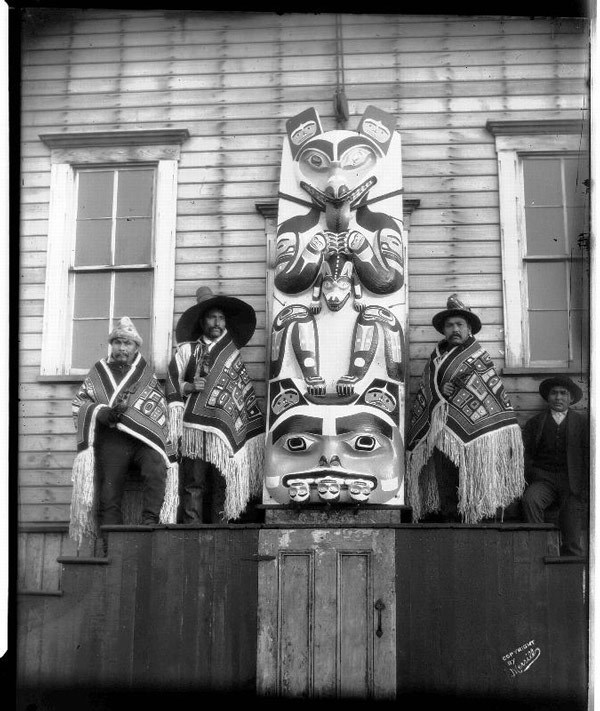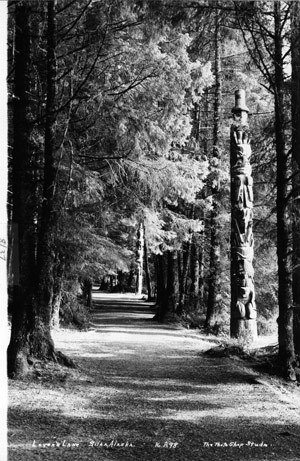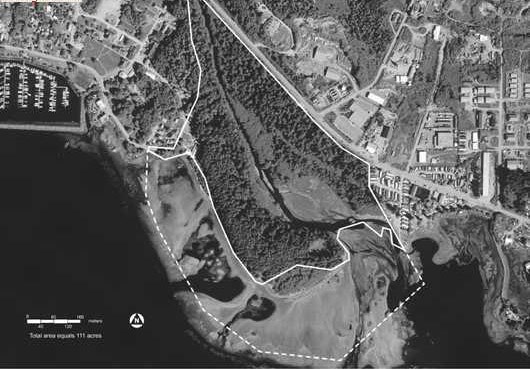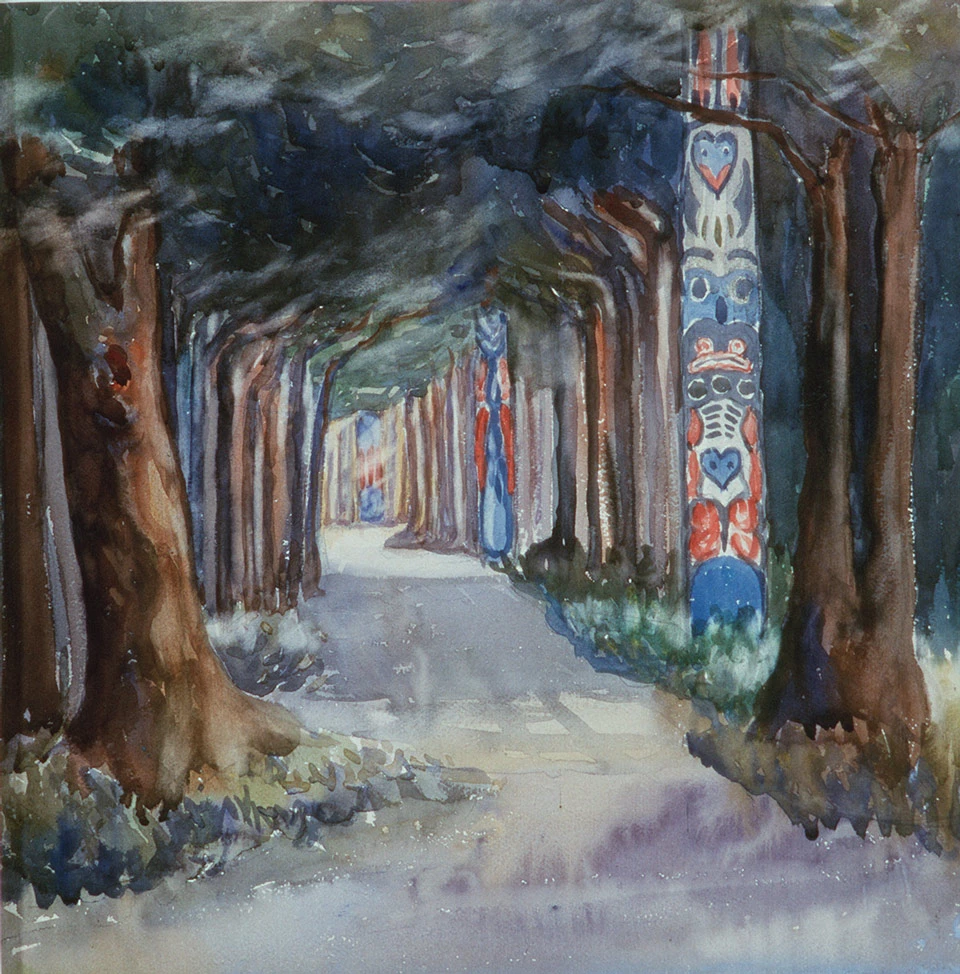Quick Facts
- Cultural Landscape: Indian River Park
- Park: Sitka National Historical Park
- Periods of Significance:
1804 - 2004 Ethnic Heritage, Landscape Architecture, Recreation1867 Sale of Russian America (Alaska) to the United States
- Featured Artwork: Totem Walk at Sitka, Emily Carr
- E.W. Merrill Photographs: Collection of photographs taken between 1880 and 1915 by the park's first custodian, E.W. Merrill
- Alaska Region Poster

Photography by E.W. Merrill, NPS/SITK3765

NPS/Sitka National Historical Park
Emily Carr
Canadian artist Emily Carr (1871-1945) visited the park in 1907 where she was inspired to paint Totem Walk at Sitka. As many visitors have found, it is difficult to experience Totem Walk without the landscape leaving a lasting impression. It was here at Sitka that she decided to document the totem poles and Native villages in Canada through her work.
Carr later went on to be one of Canada's first painters to adopt a Modernist and Post-Impressionist style that was inspired by the indigenous peoples of the Pacific Northwest Coast. Her dual interest to paint in expressive style and also to document the landscape in accurate detail is evident across her works, introducing themes of authenticity and perspective to her portrayal of landscapes significant to indigenous peoples.

NPS 2004
Interested in experiencing the Totem Walk?
Visit the park website to plan your own visit to Sitka National Historical Park.
Last updated: January 12, 2018

